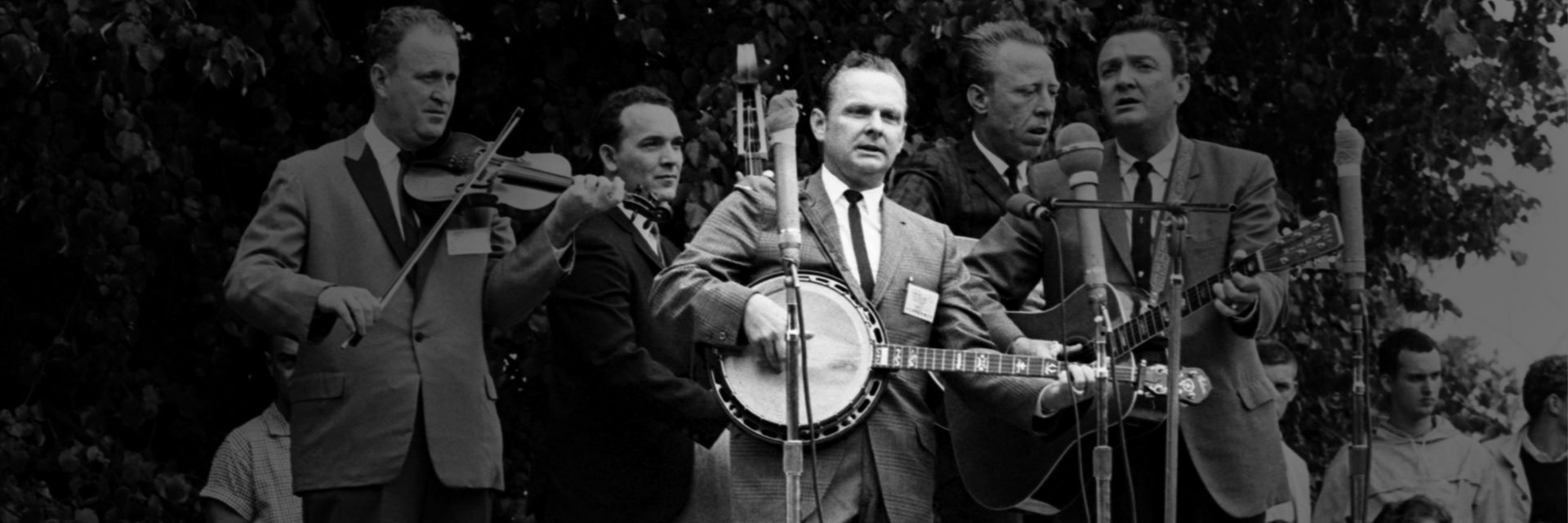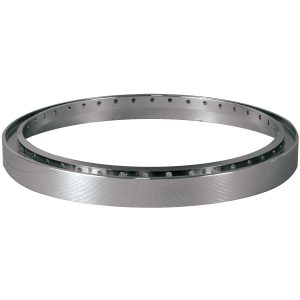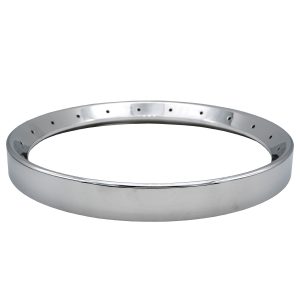
One of the most prominent and recurring questions when choosing a Bluegrass banjo is “Archtop or Flathead?” In this article we will quickly discuss some of the differences between these styles of bluegrass banjos. What do we mean when we say “archtop” banjo or “flathead” banjo. These terms refer to the tone ring that rests on the top of the wooden rim, under the head.
A banjo with an Archtop Tone Ring, is called an “Archtop Banjo” but it is also sometimes referred to as a “Raised Head Banjo”. These rings differ from a traditional Flathead Tone Ring in a few different ways. First, we will discuss the physical differences in these two styles of tone ring. Archtop tone rings get their name because of the way the head appears to be arched. The tallest part of the tone ring is not on the outer most perimeter of the 11’ ring. Rather, the tallest point of the ring being pushed away from the outside of the ring towards the interior of the ring, giving the head a slight slope around the edge. Most archtop tone rings are 40 hole, whereas most flathead tone rings are 20 hole. The specs for the hole placement and number of holes for both these styles of tone ring, across all makers, have been heavily influenced by the old Gibson tone rings of the 1920s-1940s. 40 hole is a timelessly accepted standard for Archtop Tone Rings, though there are no hole and 4 hole Gibson variations out there.

A Flat Head Tone Ring differs from an archtop in that the highest point of the ring is positioned on the outer most part of the ring, giving the head a flat plane across the entire 11’’ head, no slope or “arch”. Flathead tone rings also come in a no hole variations. Flathead tone rings are most commonly associated with the playing and sound of Earl Scruggs, arguably one of the most influential bluegrass banjoists of all time. But there are some very prominent banjoists who played archtop banjos throughout the majority of their careers.

Probably the most prominent archtop player to be mentioned is Dr. Ralph Stanley. A great deal of his unique sound came from his archtop banjo. This old video recording of Clinch Mountain Backstep is a gem to watch. Don Stover also played an archtop for the majority of his career, here is a great example of Don’s playing on White Oak Breakdown. When making a list of great banjo players who played archies, one must mention Larry McNeely. The Doc Harris Hornpipe showcases the tone of an archtop quite well. There are so many more players to mention but we won’t spoil the fun of discovering all these great archtop banjo players here.
Tonally, arch top banjos differ from flathead banjos in that they are more crisp and have a very concentrated tone, with a unique note decay. We have designed the Mastertone OB-250AT to possess all the qualities of the mega buck originals. Here Scott Cockerham demonstrates the OB-250AT , and for comparison’s sake here is Scott demonstrating the flathead OB-250. We are confident that the Mastertone OB-250AT will make for an awesome addition to any banjoist’s arsenal who is looking for a banjo with some tonal diversity!